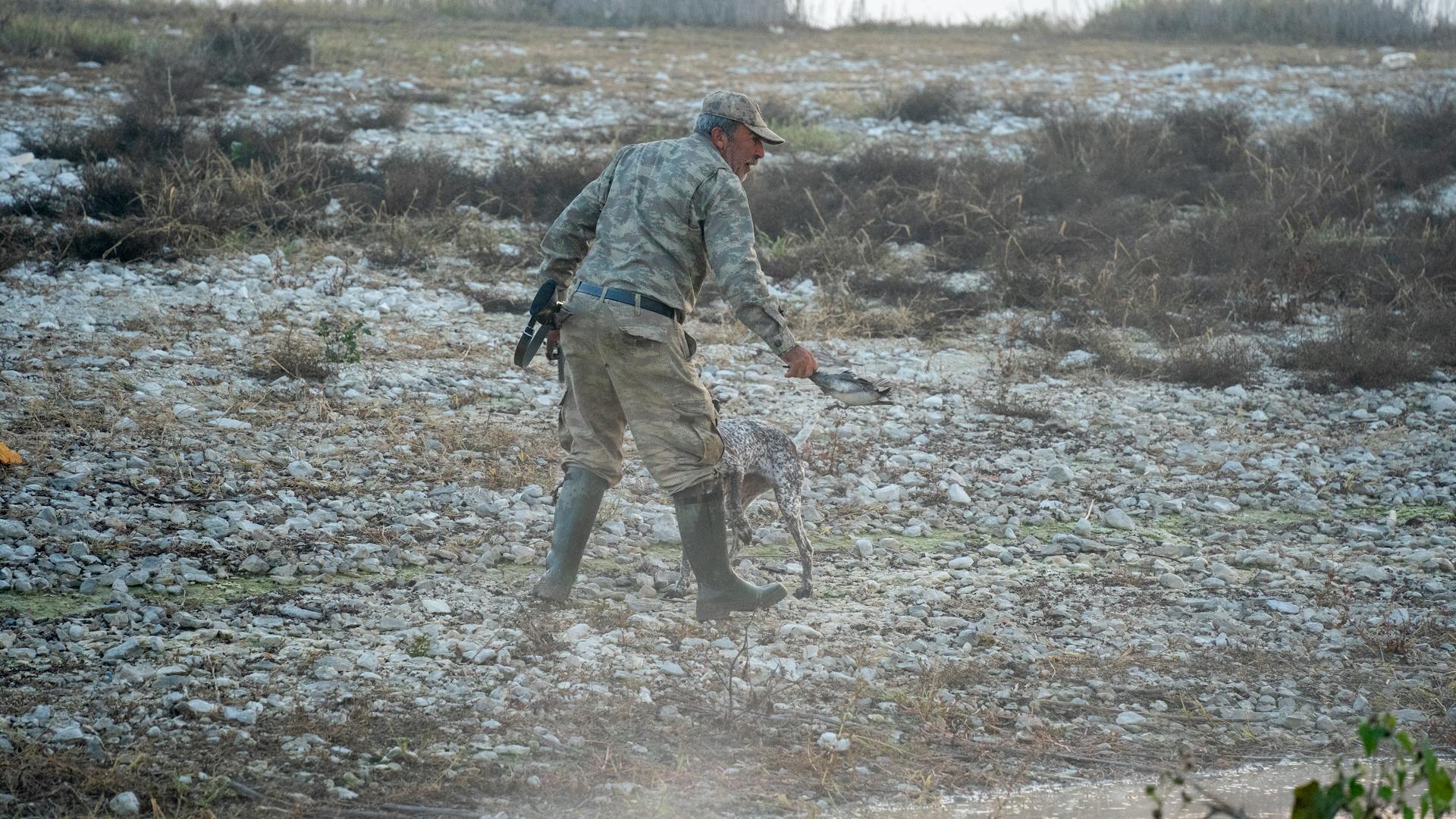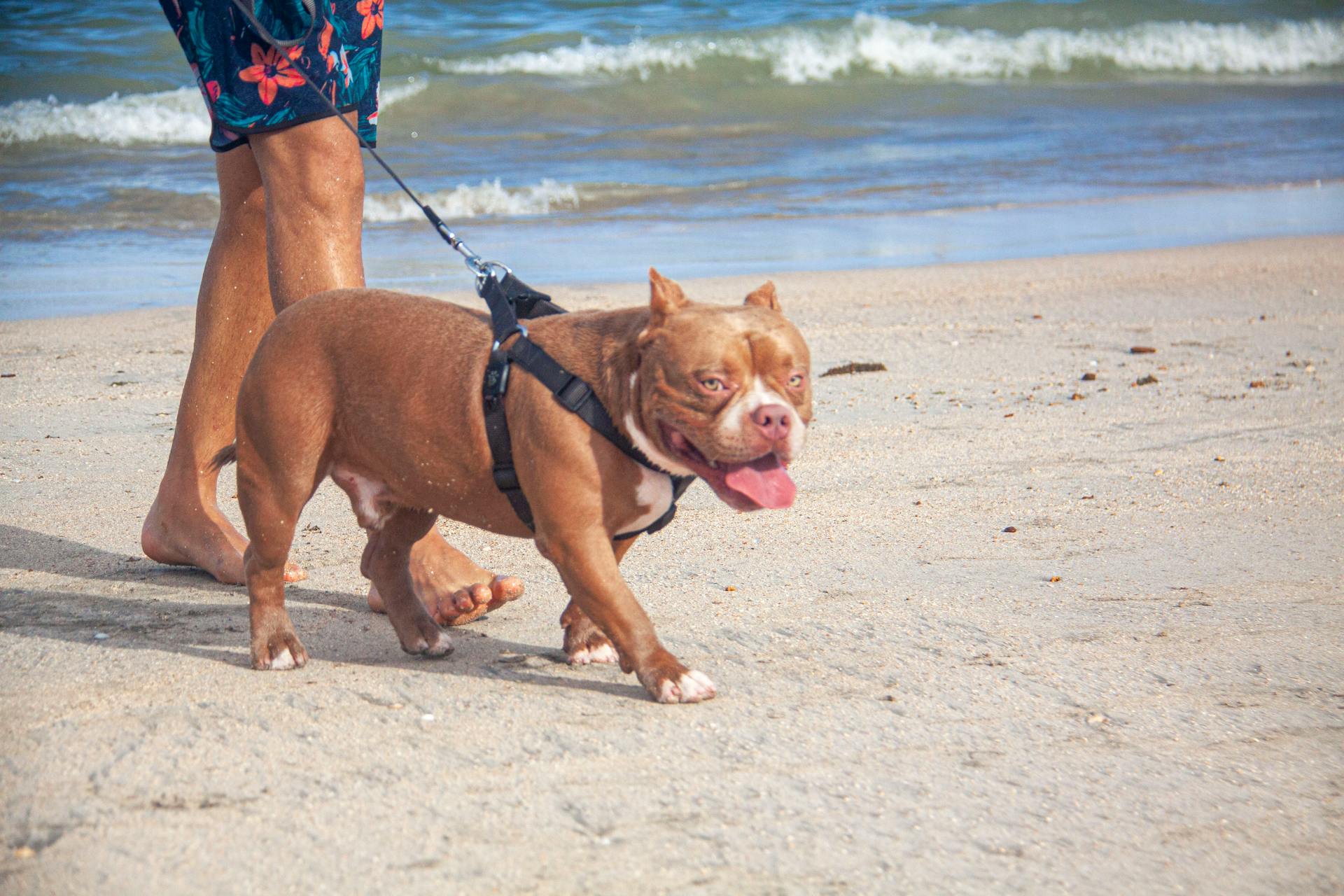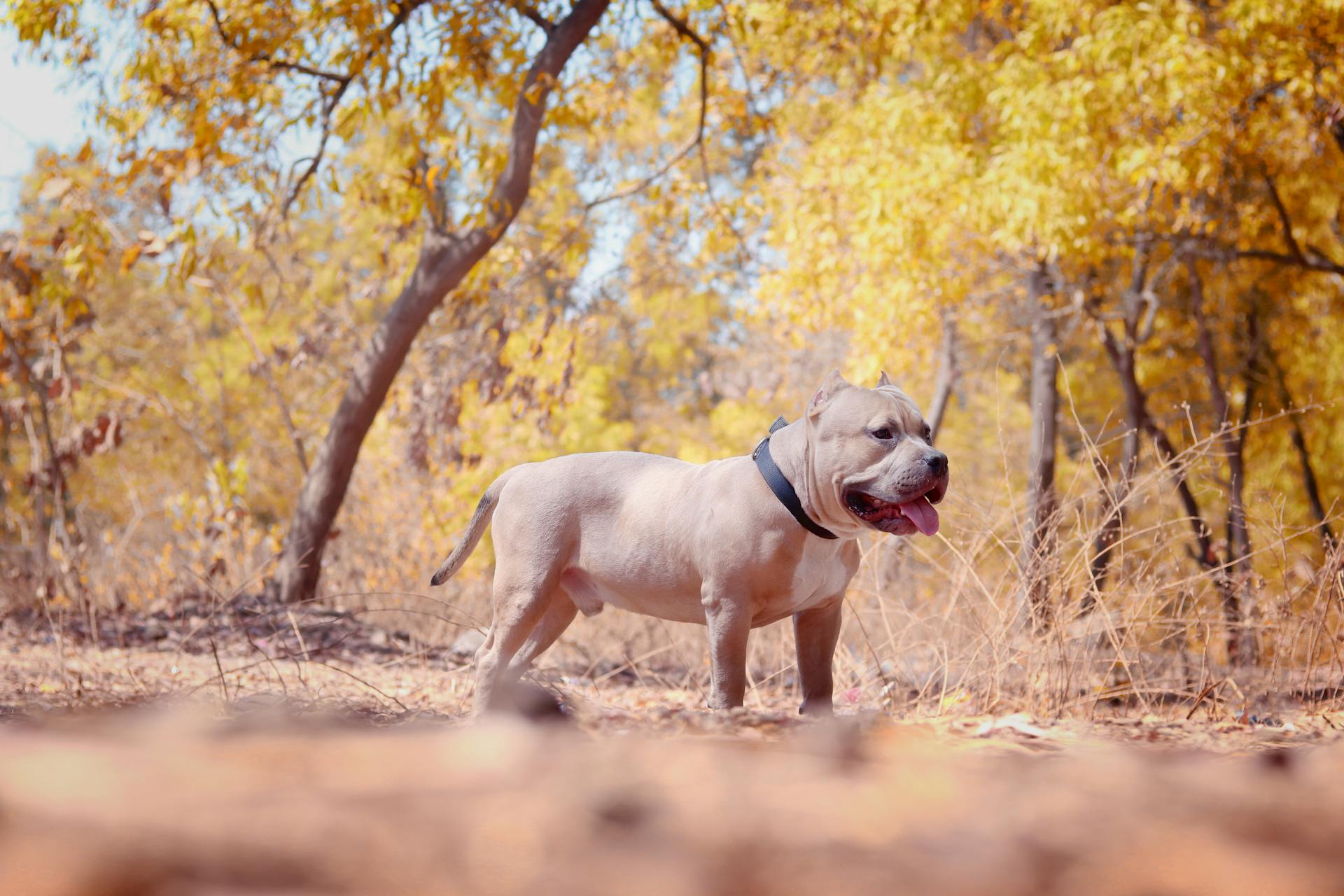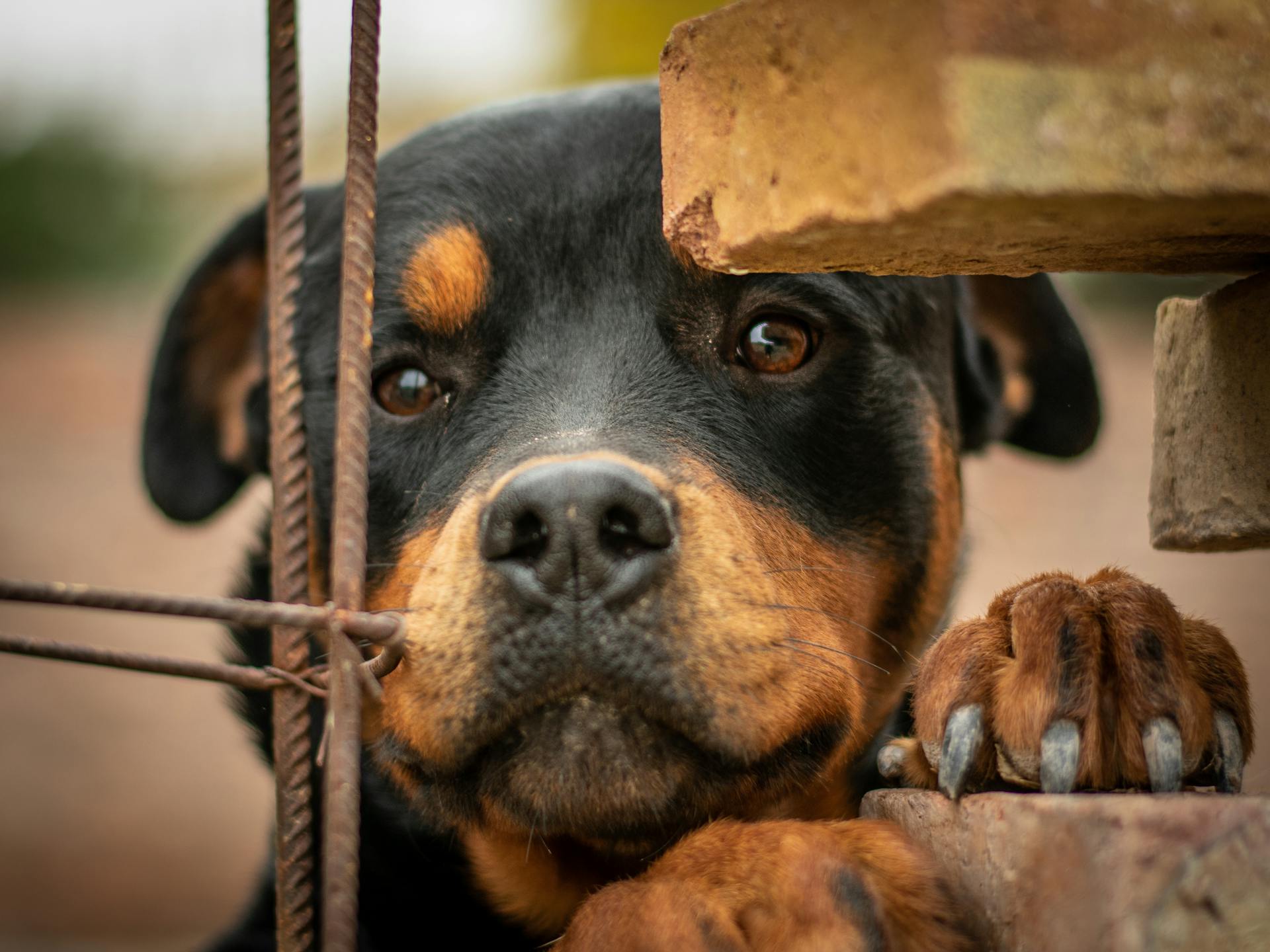
Both American Foxhounds and Treeing Walker Coonhounds are hunting breeds that originated in the United States.
The American Foxhound is known for its friendly and outgoing personality, weighing between 60-70 pounds.
Treeing Walker Coonhounds, on the other hand, are bred for their ability to tree small game, with a strong prey drive and a distinctive howl.
They both have short coats that require minimal grooming, making them a great choice for busy owners.
History of the American Foxhound
The Virginia Hounds were descendants of the English Foxhounds, and they were well-adapted to the American terrain and hunting conditions.
Their influence is evident in the Treeing Walker's adaptability and resilience. The Treeing Walker Coonhound inherited traits from the Virginia Hounds, such as their good nose.
Named after Thomas Walker, a key figure in the breed's development in the 18th century, the Walker Foxhound was a result of selective breeding of English Foxhounds. These dogs were bred for their speed, hunting ability, and good nose.
Their speed and hunting ability made them ideal for hunting in the American wilderness.
A different take: Deer Hunting with Hounds
Physical Characteristics
The Treeing Walker Coonhound and the American Foxhound are both medium to large-sized breeds, but they differ in some key physical characteristics. One notable difference is in their height, with male Treeing Walker Coonhounds standing 22-27 inches tall, while American Foxhounds typically stand between 23-25 inches tall.
Both breeds have a short, dense coat, but the Treeing Walker Coonhound's coat is often tricolored, featuring a black saddle, white markings, and tan or brown coloring. The American Foxhound's coat is more variable, but it's often tri-colored as well. Their ears are also a distinguishing feature, with the Treeing Walker Coonhound's ears being long and droopy, while the American Foxhound's ears are more moderate in length and carried with more alertness.
Here's a comparison of the two breeds' physical characteristics:
Physical Appearance
The Treeing Walker Coonhound is a medium to large-sized breed with a sleek, athletic build. They typically stand between 20-27 inches tall at the shoulder, with males reaching 22-27 inches and females slightly smaller at 20-25 inches.
One of the most distinctive features of the breed is their short, dense coat, which comes in various combinations of white, black, and tan. The coat is usually tricolored, with a black saddle or blanket on the back and white markings on the legs, chest, and face.
Their ears are set high on the head and are long and droopy, framing a friendly and alert face. The breed's eyes are medium-sized, dark brown, and have a friendly and alert expression.
Here are the specific height and weight ranges for Treeing Walker Coonhounds:
Their muscular and athletic body allows them to cover long distances with ease, making them excellent hunters. The breed has a deep chest and strong, straight legs, giving them the agility and endurance required for long hunts through rugged terrain.
Recommended read: How Long Can a Dog Smell Another Dogs Scent
Hound Characteristics
Treeing Walker Coonhounds are medium to large-sized dogs with a sleek, athletic build.
Their short, dense coat comes in various combinations of white, black, and tan.
Their ears are long and floppy, framing a friendly and alert face.
The breed's deep chest and powerful legs give them the agility and endurance required for long hunts through rugged terrain.
Treeing Walker Coonhounds are known for their high energy levels and require regular exercise to keep them happy and healthy.
Their melodious bay is both musical and purposeful, reflecting their unwavering determination and focus while on the hunt.
Their distinctive bay serves as a beacon to hunters, alerting them to the location of the quarry.
Temperament and Behavior
The Treeing Walker Coonhound is a friendly and outgoing breed that thrives on human interaction. They love spending time with their family and are generally very friendly with strangers, making them poor guard dogs.
One of the key personality traits of the Treeing Walker Coonhound is their loyalty. They form strong bonds with their human family and will go to great lengths to protect them if necessary.
Suggestion: Dog Vision vs Human Vision at Night
These dogs have a high energy level and require plenty of exercise to stay healthy and happy. They are not well-suited to apartment living and need plenty of space to run and play.
The Treeing Walker Coonhound is also a highly intelligent breed that is eager to please its owners. They are quick learners and respond well to positive reinforcement training methods.
Here are some key personality traits of the Treeing Walker Coonhound:
- Friendly: They are known for their outgoing personalities and are generally very friendly with strangers.
- Loyal: They form strong bonds with their human family and will go to great lengths to protect them if necessary.
- Energetic: They have a high energy level and require plenty of exercise to stay healthy and happy.
- Intelligent: They are highly intelligent and respond well to positive reinforcement training methods.
- Independent: They have a strong independent streak and can be quite stubborn at times.
- Vocal: They are a vocal breed that is known for their distinctive "bay" or "bawl" when on the hunt.
- Affectionate: They love to be around people and are known for their affectionate nature.
While they are affectionate and gentle with their human companions, Treeing Walker Coonhounds retain a strong prey drive, and may not be suitable for households with small pets such as cats or rabbits.
Exercise and Training
The Treeing Walker Coonhound and the American Foxhound are both energetic breeds that require regular exercise to keep them happy and healthy. They need at least 60-90 minutes of exercise each day.
Daily walks, runs, or engaging activities such as agility training or scent work are essential to satisfy their need for activity. A secure and fenced outdoor area is also crucial, as they can be prone to wanderlust when a tantalizing scent catches their attention.
A unique perspective: Scent Hound Dogs
Consistent, positive reinforcement-based training is crucial for both breeds due to their independent nature. They respond well to praise and rewards and training sessions should be kept interesting and varied to prevent boredom.
Obedience training and recall exercises are especially important to ensure they can be safely off-leash in suitable environments. The Treeing Walker Coonhound, in particular, needs plenty of mental stimulation to keep their minds engaged.
Here are some key exercise and activity requirements for both breeds:
Both breeds are easy to train, but they do require patience and consistent training to channel their energy in a positive direction.
The Role in Hunting
The Treeing Walker Coonhound is a natural-born hunter, bred to track and tree small game like raccoons, squirrels, and possums. Their exceptional sense of smell and agility make them ideal companions for hunters in the southern United States.
Their stamina is impressive, allowing them to chase game up into trees and navigate challenging terrain. They're particularly prized for their ability to locate and tree game in difficult conditions.
The Treeing Walker Coonhound's distinctive bay serves as a beacon to hunters, alerting them to the location of the quarry. This unique vocalization is a key part of their hunting ability.
Their determination and perseverance on the hunt make them valuable assets to hunters who rely on their tracking abilities. They're not just a tool for hunting, but a partner in the chase.
Genetic Ancestry
The Treeing Walker Coonhound has a rich genetic ancestry that sets it apart from other breeds. Its primary ancestors include the Walker Hound, the Tennessee Lead Hound, and the English Foxhound.
The Walker Hound was known for its exceptional scenting ability and endurance. This trait has been passed down to the Treeing Walker Coonhound, making it a skilled hunting dog.
The Tennessee Lead Hound, on the other hand, was renowned for its speed and agility. These traits have also been inherited by the Treeing Walker Coonhound, making it a versatile hunting dog.
Worth a look: Walker Plott Hound
The English Foxhound was added to the mix to improve the breed's hunting instincts and create a more versatile hunting dog. This addition has contributed to the Treeing Walker Coonhound's ability to track and tree a variety of game.
The Treeing Walker Coonhound's genetic ancestry is a key factor in its exceptional hunting skills and distinctive bay. Its unique blend of traits has made it a popular breed among hunters in the southern United States.
Health and Care
When it comes to the health and care of these two breeds, it's essential to consider their exercise needs. American Foxhounds require regular exercise to stay happy and healthy, with a daily routine of at least 30 minutes of physical activity.
Both breeds are prone to hip dysplasia, a genetic condition that can lead to arthritis and mobility issues. Treeing Walker Coonhounds, in particular, are also susceptible to eye problems, including cataracts and progressive retinal atrophy.
Regular veterinary check-ups and a balanced diet can go a long way in preventing or managing these conditions.
Beagle Health and Lifespan
The Beagle is a relatively healthy breed, but there are certain health issues that you should check with your vet regularly.
Hip Dysplasia is a common health problem in Beagles, which can lead to arthritis and mobility issues.
Beagles are prone to Patellar Luxation, a condition where the kneecap slips out of place.
Hypothyroidism is another health issue that can affect Beagles, causing weight gain and skin problems.
Progressive retinal atrophy (PRA) can cause blindness in Beagles, so it's essential to monitor their eyes regularly.
Epilepsy is a genetic condition that can cause seizures in Beagles.
Intervertebral Disk Disease can cause back problems in Beagles, leading to pain and mobility issues.
Cherry Eye and Distichiasis are eye problems that can affect Beagles, causing discomfort and vision issues.
Glaucoma is a condition that can cause blindness in Beagles.
Beagle Dwarfism and Chinese Beagle Syndrome are rare genetic conditions that can affect Beagles, causing growth and development problems.
Broaden your view: Irish Wolfhound Health Problems
Beagles typically live for 11-15 years, with an average lifespan of 13 years.
Regular veterinary check-ups are essential to monitor your Beagle's health and catch any potential issues early.
Here's a summary of common Beagle health issues:
Sources
- https://www.dogbreedinfo.com/treeingwalkercoonhound.htm
- https://blog.tryfi.com/treeing-walker-coonhounds/
- https://www.akc.org/dog-breeds/treeing-walker-coonhound/
- https://blog.tryfi.com/where-are-treeing-walker-coonhounds-from/
- https://dogell.com/en/compare-dog-breeds/beagle-vs-american-foxhound-vs-treeing-walker-coonhound
Featured Images: pexels.com


